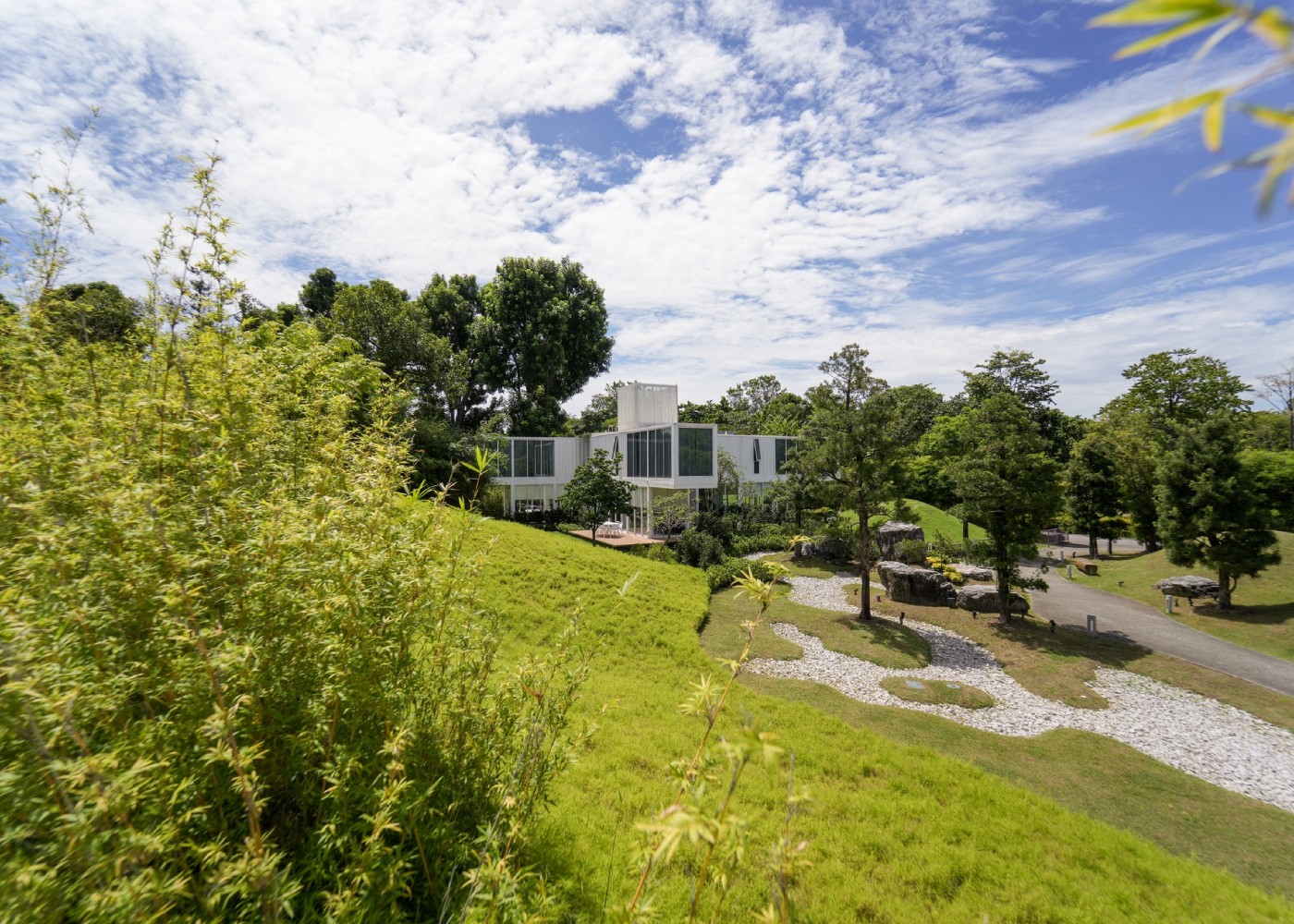Singapore Pavilion at World Expo 2025 Japan Sets a New Standard for Green Architecture
Published on February 24, 2025 | by DSGN arcHive
Join us as we delve into the Pavilion’s role in shaping a sustainable future with the visionary minds behind its creation.
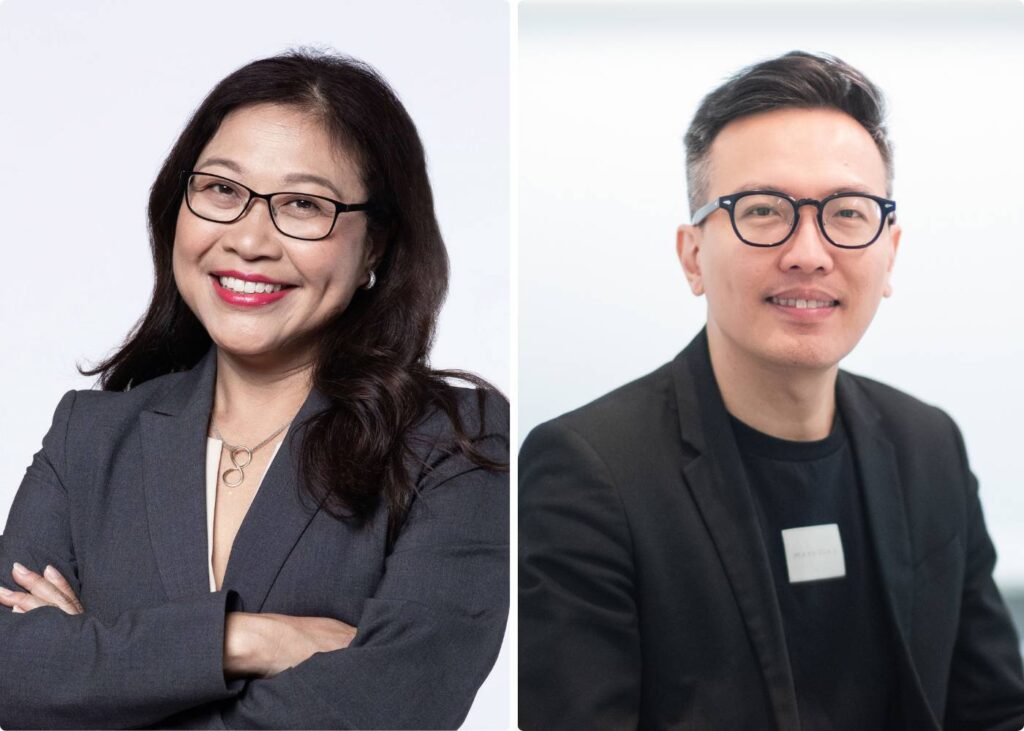
Singapore’s participation in World Expo 2025 Osaka goes beyond just a showcase. In fact, it’s a bold statement of the nation’s unwavering commitment to a sustainable and resilient future. At the heart of the Singapore Pavilion lies the Singapore Green Plan 2030, which brings together cutting-edge green technologies, innovative design, and a clear vision of inclusivity. Through a seamless collaboration between DP Architects and Kingsmen, the Pavilion highlights how thoughtful architecture can lead the way toward a greener tomorrow.
In this insightful interview, we chat with Carrie Kwik, Executive Director, World Expo and Special Project, Singapore Tourism Board, and Ar. Seah Chee Huang, CEO of DP Architects and Architecture Lead for the Singapore Pavilion at Expo 2025 Osaka. Together, they explore how the Pavilion integrates key principles such as circularity, modularity, and environmental responsibility. From the 4Rs—Reduce, Reuse, Recycle, and Renew—to its long-term impact beyond the Expo. They also share how design can drive meaningful change and inspire global action towards a more sustainable future.
The Singapore Pavilion at World Expo 2025
1. How does the Singapore Tourism Board’s involvement in the World Expo align with Singapore’s broader sustainability goals, such as the Singapore Green Plan 2030? From an architectural perspective, how do projects like the Singapore Pavilion contribute to advancing these national ambitions?
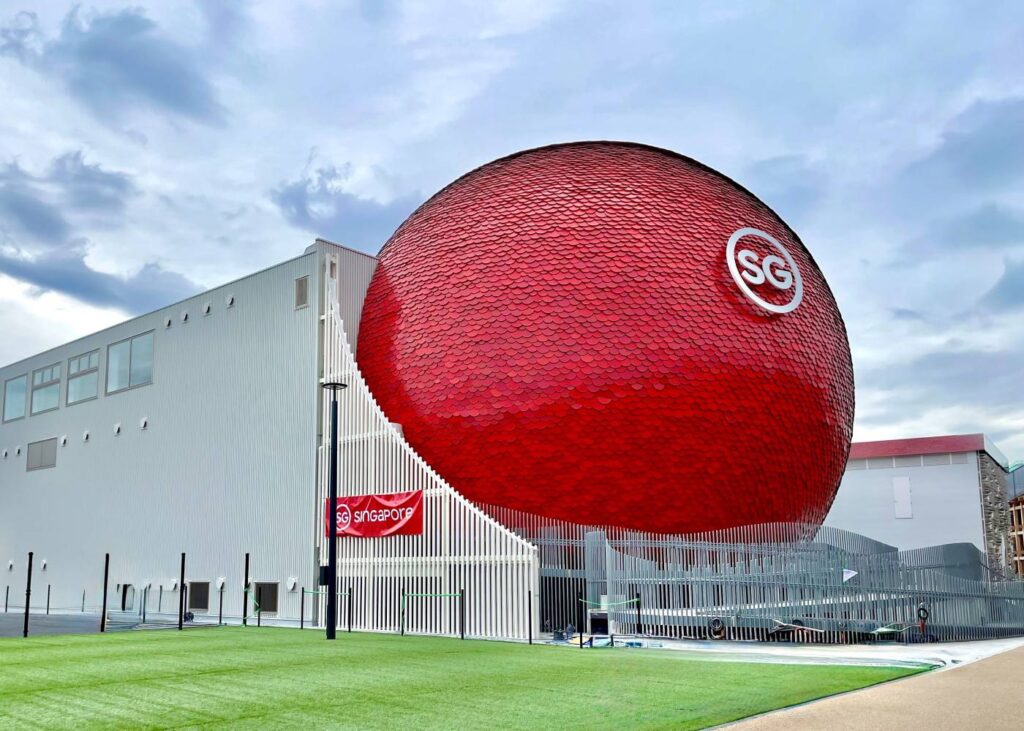
Carrie Kwik (STB): Singapore’s participation at Expo 2025 Osaka is an opportunity to promote the country as a dynamic destination for business and leisure, highlighting its innovative, sustainable, resilient and inclusive characteristics.
In early 2023, Singapore-based firm, Kingsmen Exhibits Pte Ltd, was awarded the tender for turnkey services because their submission demonstrated an ability to showcase an outstanding architectural design anchored by a strong Singapore story that demonstrates Singapore’s achievements and our multi-racial harmony.
Working together with DP Architects, the concept for the Singapore Pavilion brought to life by Kingsmen Exhibits demonstrates environmental sustainability efforts to reduce energy
consumption. This aligns with Singapore’s commitments to the Singapore Green Plan 2030, showcasing the country as a sustainable urban destination and highlighting its efforts in building a city in nature with resilience for the future.
With sustainability as one of the key aspects of the Singapore Pavilion, the design philosophy incorporates 4Rs (renew, reduce, reuse and recycle) and circularity through the design, construction, operations and reinstatement phases of the project.
2. The Singapore Pavilion incorporates the 4Rs—Reduce, Reuse, Recycle, and Renew—into its design and operations. What is the significance of adding “Renew” to this framework, and how was it practically implemented in the Pavilion’s modular design to ensure its components can be reused or repurposed after the Expo?

Chee Huang (DPA): The inclusion of renew in the 4Rs framework reflects a forward-thinking design aspiration to go beyond traditional notions of sustainability by promoting circularity through innovation and green technologies. This approach also embodies a commitment to long-term resource efficiency.
The pavilion’s design ethos, characterised by its modularity, is central to this vision. Standardised components, such as building-integrated photovoltaics (BIPV) panels, were seamlessly integrated into the roof design. This not only offsets part of the pavilion’s energy consumption during the expo, but also allows for the components to be reused or repurposed after the event.
This modular approach and circular thinking demonstrate how, with care, design can maximise resource efficiency to contribute to a more sustainable future.
3. The Singapore Pavilion has set clear sustainability targets, such as reducing carbon emissions and generating renewable energy. How were these metrics developed, and how did they influence the design and operational decisions? Additionally, how will the impact of these efforts be measured and communicated to visitors?
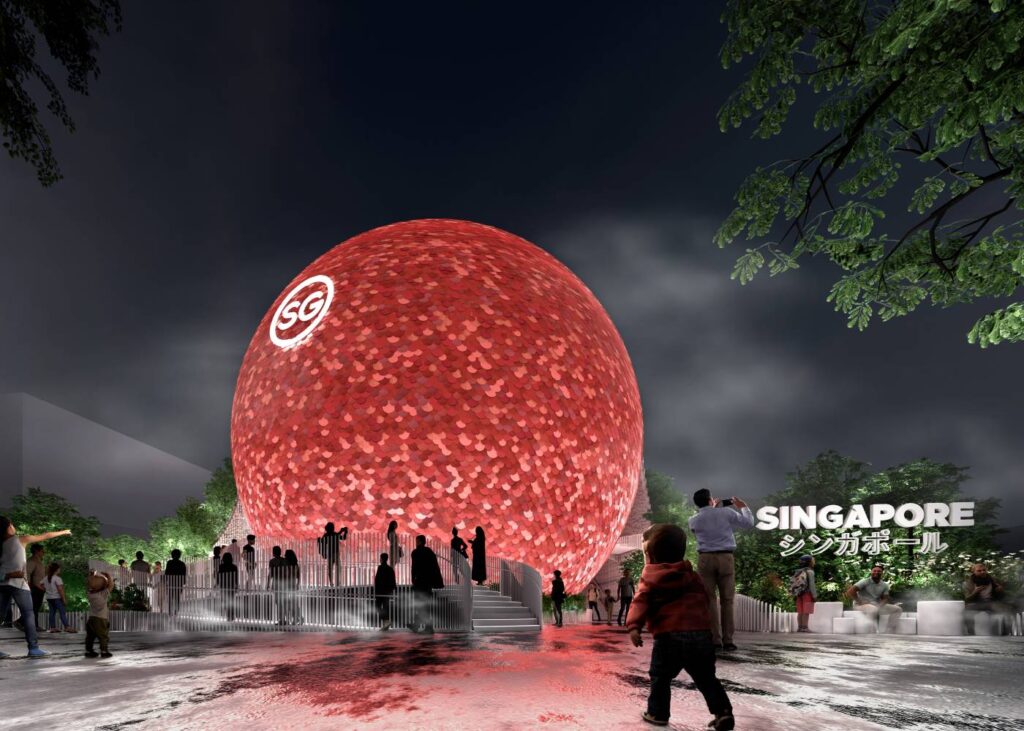
Chee Huang (DPA): The sustainability metrics were developed with key stakeholders in alignment with Expo 2025’s goal towards achieving the United Nations Sustainable Development Goals, and especially Singapore’s environmental initiatives. These metrics support Singapore’s ongoing efforts in its green pursuit, such as the Singapore Green Plan 2030 towards the country’s net-zero emissions target by 2050.
Aligning with these aspirations, the metrics informed design decisions such as the modular system, material selection and energy-efficient features. These include the use of rooftop building-integrated photovoltaic panels, generating about 15,000 kilowatt-hour of renewable energy to offset the pavilion’s energy consumption over the duration of Expo 2025; the adoption of efficient water-saving drip irrigation for landscaping, reducing water usage by about 60%; and the use of aluminium discs with 70% post-consumer recycled content, cutting carbon dioxide emissions by approximately 70 tonnes, equivalent to the amount absorbed by 2,500 trees annually.
4. From an architectural perspective, how do projects like the Singapore Pavilion contribute to advancing these national ambitions?
Chee Huang (DPA): National pavilions at world expos play a pivotal role in sharing a country’s ambitions on the global stage, showcasing its aspirations, commitments and innovative solutions. The Singapore Pavilion stands as a testament to the nation’s journey towards building a more inclusive and resilient future. Aligned with Expo 2025’s overarching theme “Designing Future Society for Our Lives”, the Dream Sphere embodies Singapore’s dedication to co-creating a better world while fostering global collaboration.
The Singapore Pavilion also offers insights into national environmental initiatives such as the Singapore Green Plan 2030, a whole-of-nation roadmap for sustainable development. It reflects Singapore’s commitment to inclusivity, liveability and sustainability, showcasing our path towards a better future.
The Dream Sphere communicates Singapore’s vision through storytelling, sharing the nation’s values with narratives that inspire collective action and a shared commitment towards a sustainable and inclusive future.
5. The Pavilion is designed to educate and engage visitors on the importance of the 4Rs. How does its design and programming create an interactive experience to inspire individuals to adopt sustainable practices in their daily lives?
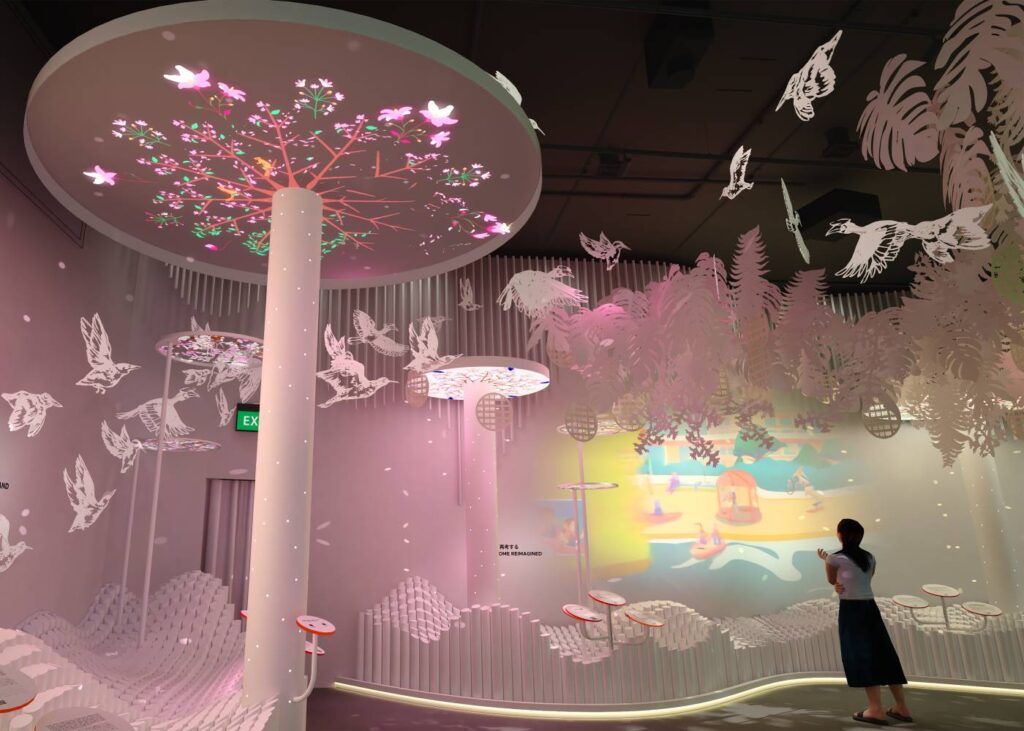
Chee Huang (DPA): The pavilion’s design adopts a multi-faceted approach to inspire visitors to take collective action in shaping a better-than-sustainable future. Through its ethos, design and programming, it offers an interactive experience that bridges Singapore’s identity with global aspirations for a better, more sustainable world.
In its expression, the pavilion materialises the “little red dot” — a term of endearment for Singapore — into a larger-than-life, experiential Dream Sphere. This architectural centrepiece symbolises Singapore’s journey, serving as a platform for visitors to dream together and envision a brighter future.
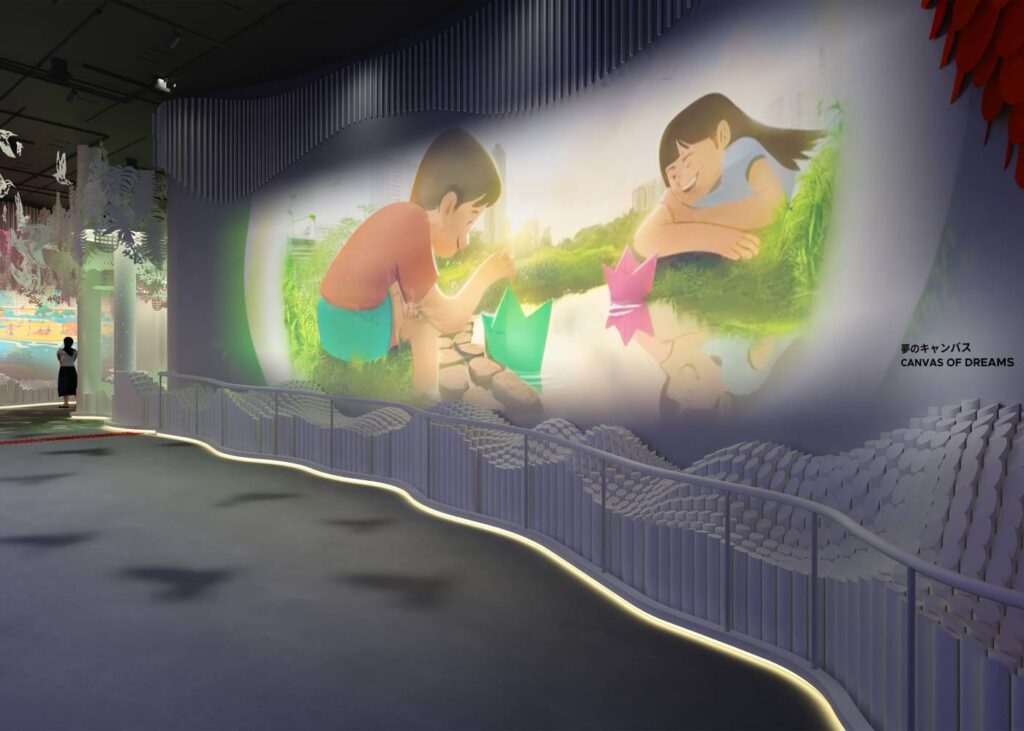
In its design, the pavilion exemplifies innovation and environmental stewardship through its architectural and landscape design. Facade elements, such as the over 17,000 aluminium discs made with 70% postconsumer recycled content, and the pavilion’s energy-efficient systems demonstrate how design can address challenges such as carbon emissions, advocating for sustainable and responsible practices.
In the experience it offers, visitors embark on a spatial and multi-sensory journey that
showcases a diverse range of artistic mediums by local creatives. From visual installations to soundscapes, multimedia displays and storytelling, these exhibits are the result of cross disciplinary collaborations designed to create an immersive experience. The narrative elements empower visitors to realise how their individual actions and daily practices can collectively contribute to a greener, more sustainable future for all.
6. Beyond the Expo, what long-term impact do you hope the Singapore Pavilion will have in positioning Singapore as a global leader in sustainability? What lessons from its design and construction can be applied to future architectural and urban development projects?
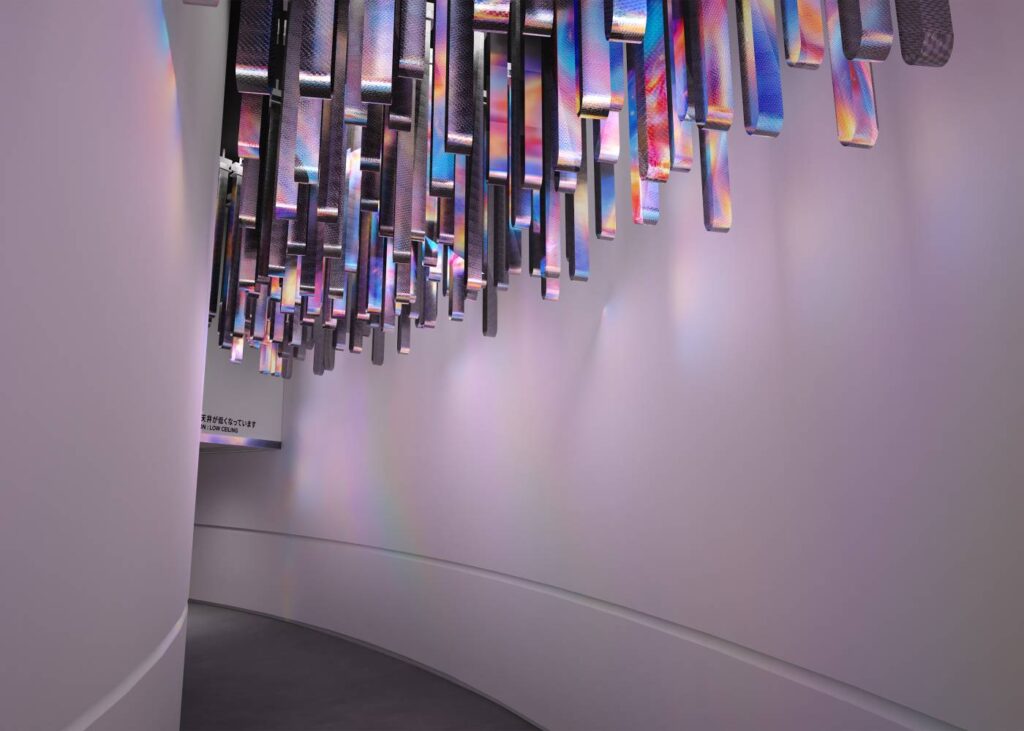
Carrie Kwik (STB): Singapore remains steadfast in our commitment to sustainable
development, and we have taken concrete measures to pursue this, by balancing economic growth with environmental protection and social inclusion. Within the Singapore Pavilion, we aim to showcase what Singapore is doing to contribute to Sustainable Development Goals (SDGs)1, such as highlighting our efforts in creating a harmonious environment for nature, wildlife and people and in turn, making Singapore a better home for all communities.
During their visit to the Singapore Pavilion, visitors can learn more about Singapore’s plans and roadmaps, such as the Singapore Green Plan 2030, innovative approaches to clean energy transition and climate action, including net-zero emissions target by 2050.
Through the Pavilion at Expo 2025 and beyond, we aim to inspire others by sharing our
experiences and learning from others. This exchange of ideas will catalyse our collective efforts to build a more sustainable and inclusive future for all.
7. What lessons from its design and construction can be applied to future architectural and urban development projects?
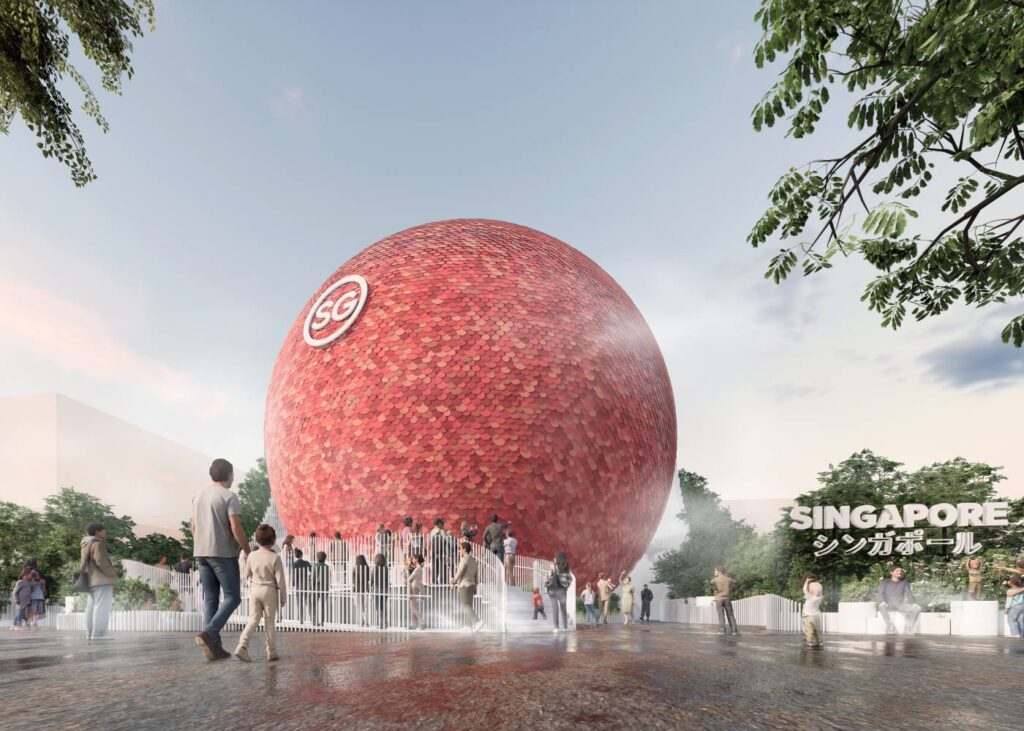
Chee Huang (DPA): The design and construction of the pavilion offer valuable opportunities for meaningful discourse on its broader applications.
The pavilion highlights how architecture can serve as a vehicle for purpose-driven experiences, and a powerful medium to communicate aspirations and champion values such as sustainability and inclusivity. Its energy-efficient features demonstrate how design can align with environmental responsibility, encouraging low-carbon approaches to developments. Equally important was the focus on inclusivity – designing spaces that cater to diverse needs while fostering connection and a sense of belonging.
Collaboration is another key aspect of the process. Partnerships between multidisciplinary stakeholders and the various creatives cultivated a participatory environment where diverse perspectives enriched the project. Community outreach and engagement were integral in ensuring that the pavilion deeply resonated with the people it was designed for.
Additionally, the pavilion demonstrates the power of immersive storytelling as a tool to convey ideas and aspirations, inspiring visitors and stakeholders while communicating a compelling narrative of shared values.
Collectively, these insights emphasise the transformative potential of architecture to go beyond functionality and become a purposeful and meaningful platform to champion shared values and drive impactful change.
And that’s a wrap! Thank you to Carrie Kwik and Chee Huang for sharing these invaluable insights with us. What do you think about the Singapore Pavilion at the World Expo 2025? Send us a DM at archivedsgn@gmail.com
Wondering what we’re up to next?
Give us a follow and stay in the loop!
About DSGN arcHive
DSGN arcHive is your exclusive key to unveiling the enigmatic essence of a city, all filtered through the prism of design. Far from the ordinary tourist paths. We reveal the city’s architectural marvels, urban intricacies, cultural tapestry, and eco-conscious revolutions that mold its distinctive soul. With us, you’re invited to savor the metropolis in an entirely chic and sophisticated light, a city that’s far more than what meets the eye.
Copyright © 2025 DSGN arcHive




